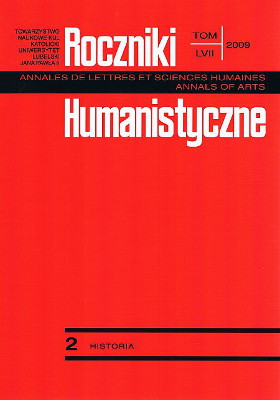Symbolism of the Sokola Coat of Arms
Abstract
The wild boar and the bear have been present in people's beliefs and customs from time immemorial. This was the case both with beliefs of representatives of folk culture – e.g. peasants in Byelorussia or shepherds in Silesia – and with recipients of high-brow and sophisticated chronicles written by medieval historians. The boar and the bear lived side by side, and this common presence – both the real one, connected with their similar habitats, and the proximity in the sphere of material and spiritual culture – could lead to the features of both these animals merging in one image, that is in the Sokola coat of arms, in which one can see a half-boar and half-bear.
References
Anonim tzw.Gall: Kronika polska, oprac. M. Plezia, tł. R. Grodecki, wyd. III, Wrocław 1968.
Galla kronika, w: Monumenta Poloniae Historica, t. I, wyd. A. Bielowski, Lwów 1864.
JankozCzarnkowa: Kronika, oprac. J. Szlachtowski, w: Monumenta Poloniae Historica, t. II, wyd. A. Bielowski, Lwów 1872.
JanzCzarnkowa: Kronika, tł. J. Żerbiłło, oprac. M.D.Kowalski, wyd.III, Kraków 2003.
Kiersnowski R.: Niedźwiedzie i ludzie w dawnych i nowszych czasach. Fakty i mity, Warszawa 1990.
MistrzWincentyKadłubek: Kronika polska, w: Monumenta Poloniae Historica, t. II, wyd. A. Bielowski, Lwów 1872.
MistrzWincentyKadłubek: Kronika polska, tł. B. Kürbis, Wrocław 2003.
Paprocki B.: Gniazdo cnoty, Kraków 1578.
Pastoureau M.: Średniowieczna gra symboli, tł. H. Igalson-Tygielska, Warszawa 2006.
Samsonowicz A.: Łowiectwo w Polsce Piastów i Jagiellonów, Wrocław−Warszawa−Kraków 1991.
Szymański J.: Herbarz średniowiecznego rycerstwa polskiego, Warszawa 1993.
Copyright (c) 2009 Roczniki Humanistyczne

This work is licensed under a Creative Commons Attribution-NonCommercial-NoDerivatives 4.0 International License.





